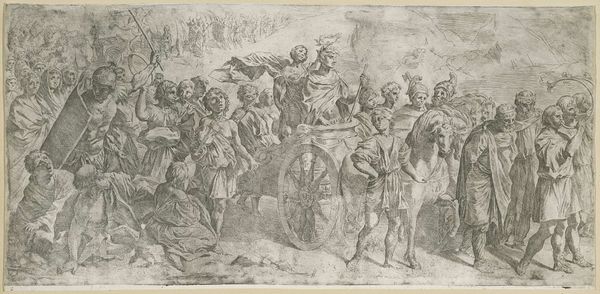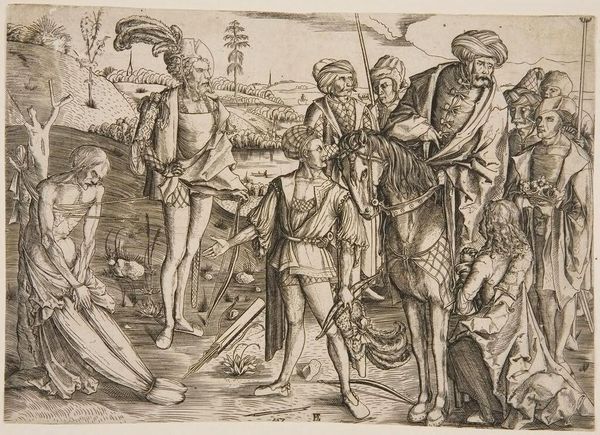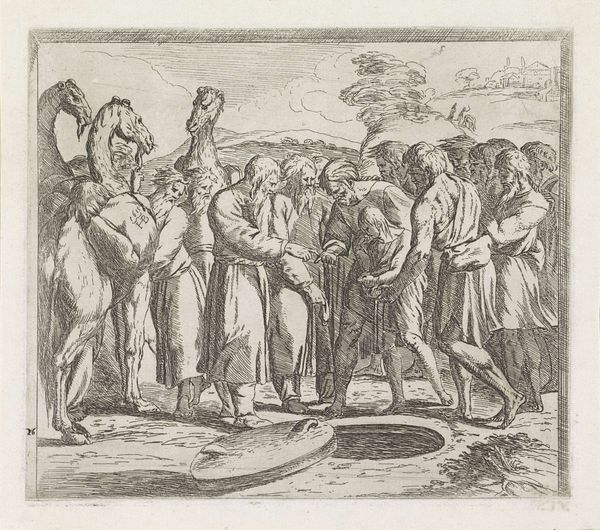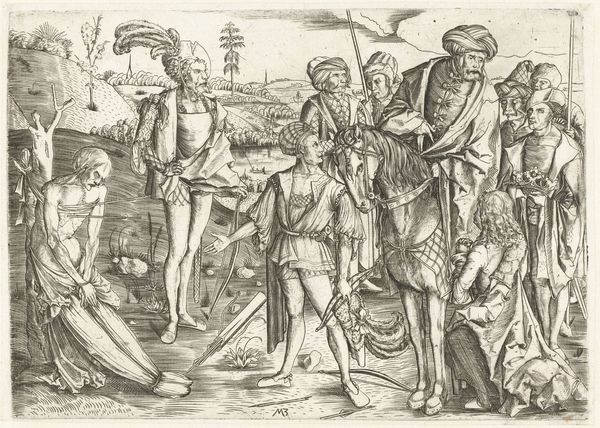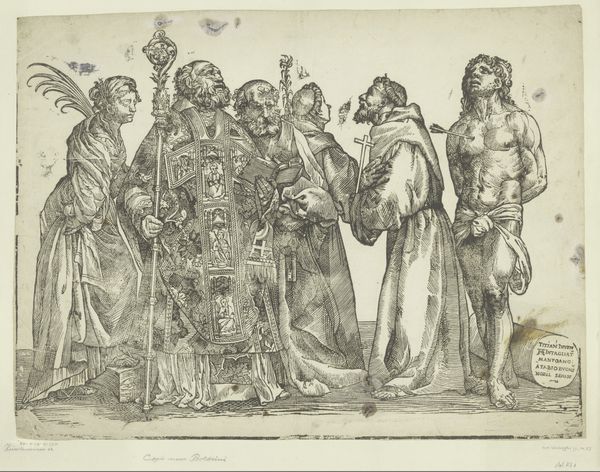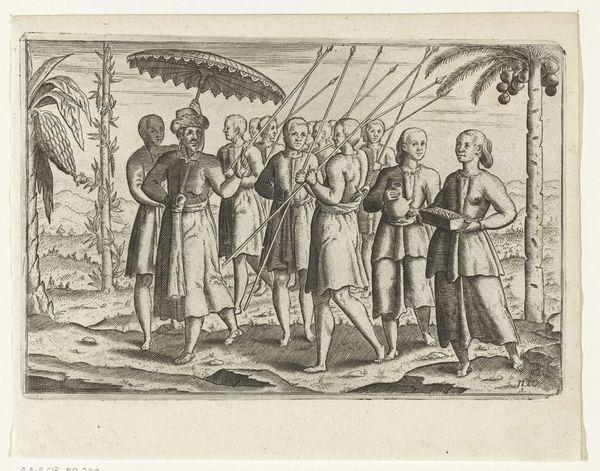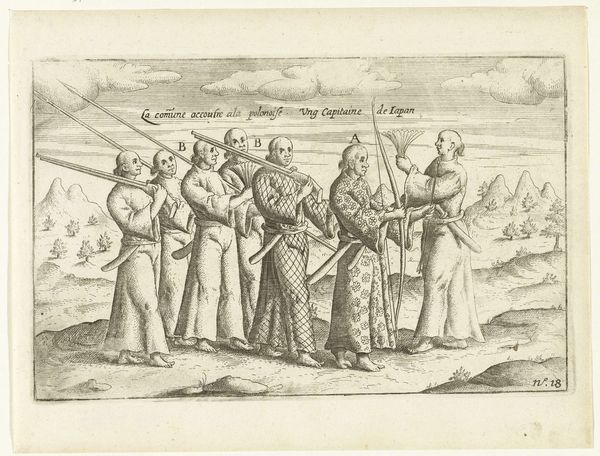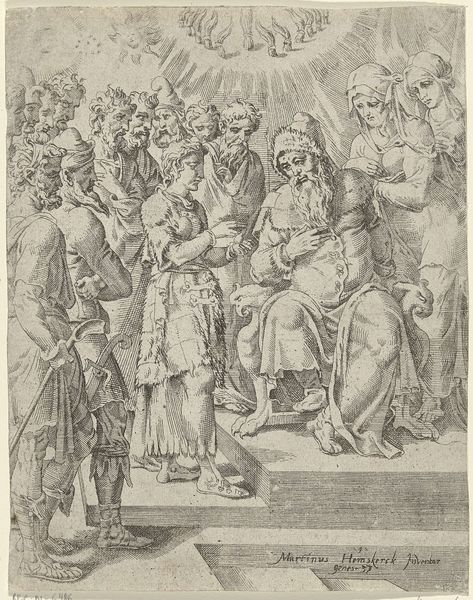
engraving
allegory
mannerism
figuration
line
history-painting
nude
engraving
Dimensions: height 188 mm, width 242 mm
Copyright: Rijks Museum: Open Domain
Curator: Welcome! Before us is "Negatieve emoties dringen zich bij de mens op" by Philips Galle, an engraving created in 1563. The Rijksmuseum holds this piece in its collection. Editor: My initial reaction? The sheer linearity is striking. Look at the crispness of each figure, the clear separation of forms. There's a real graphic quality to this image, a potent design sense. Curator: Exactly. This artwork delves into the historical moment in which figures representative of human vices and failings like greed, sorrow, and suffering press in upon a nude male form meant to represent humankind. Editor: Yes, there's something inherently theatrical about this. The way the figures are arranged, almost as if on a stage, draws the eye across the composition. It feels almost baroque. Curator: Mannerist, definitely. Note the distorted, elongated proportions. See how "Avaritia" or Greed fondles a small idol as "Homo", Mankind, is pulled from "Optime" or Hope, toward the other personifications of vices. These represent social and personal decay after the Reformation when read within a historical context. Editor: I see it in the intricate drapery, the dynamic poses. It really emphasizes movement and artifice in form. How does the nudity of the central figure, this 'Homo,' factor into this semiotic tableau? Curator: The nude figure represents humankind stripped bare, both literally and metaphorically. Absent moral guidance he is vulnerable. This returns to the social and personal impact of the reformation; with faith in decline, what is to guide individuals to positive moral standing? The engraving is a product of anxieties regarding society's moral future in this specific context. Editor: I agree that it represents a specific societal angst, especially apparent in Galle's deliberate arrangement of shadow and light—he uses value to create emotional depth. Curator: By using these figures as stand-ins for psychological concepts, Galle situates himself within larger allegorical traditions during a critical period in European history. The impact lies in confronting an audience with what Galle understands as moral hazards facing humankind. Editor: This intense use of line and allegory encourages me to see familiar historical and political territory afresh. Curator: Indeed. Hopefully, it helps us look differently at art and consider its relation to the development of philosophical inquiry and politics across time.
Comments
No comments
Be the first to comment and join the conversation on the ultimate creative platform.
